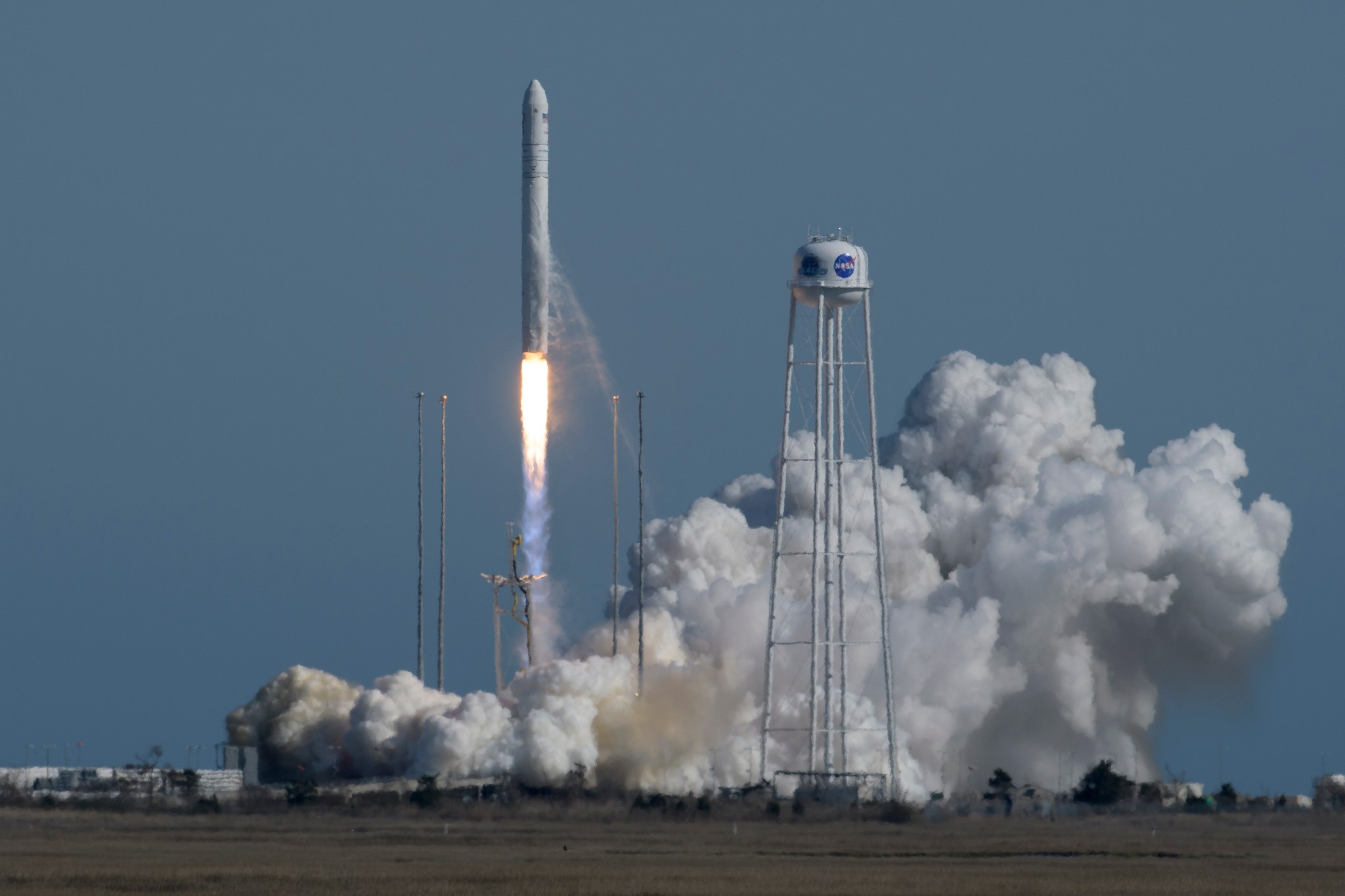
Northrop Grumman’s Cygnus spacecraft is on its way to the International Space Station with about 7,600 pounds of science investigations and cargo after launching at 4:46 p.m. EDT Wednesday from NASA’s Wallops Flight Facility in Virginia.
The spacecraft launched on an Antares 230 Rocket from the Virginia Mid-Atlantic Regional Spaceport’s Pad 0A at Wallops and is scheduled to arrive at the orbiting laboratory around 5:30 a.m. Friday, April 19. Coverage of the spacecraft’s approach and arrival will begin at 4 a.m. on NASA Television and the agency’s website.
Expedition 59 astronauts Anne McClain of NASA and David Saint-Jacques of the Canadian Space Agency (CSA) will use the space station’s robotic arm to capture Cygnus, while NASA’s Nick Hague monitors telemetry. The spacecraft will stay at the space station until July.
This delivery, Northrop Grumman’s 11th cargo flight to the space station under NASA’s Commercial Resupply Services contract, will support dozens of new and existing investigations. Here are details about some of the scientific investigations Cygnus is delivering to the space station:
Models for growing increasingly complex materials
Advanced Colloids Experiment-Temperature-10 (ACE-T-10) will test gels in a microgravity environment. This research could aid in the development of increasingly complex materials that may serve as the building blocks for a range of applications on Earth including foods, drugs, and electronic devices. The process also may provide an efficient method to build new materials and equipment in space.
Better life science research in a few drops
Although the space station is well equipped for health and life sciences research, the equipment available for cellular and molecular biology still is limited compared to capabilities found in laboratories on Earth. To address this limitation, CSA designed Bio-Analyzer, a new tool the size of a video game console that astronauts on station easily can use to test body fluids such as blood, saliva, and urine, with just a few drops. It returns key analyses, such as blood cell counts, in just two to three hours, eliminating the need to freeze and store samples.
Analyzing aging of the arteries in astronauts
The Vascular Aging investigation uses ultrasounds, blood samples, oral glucose tolerance tests, and wearable sensors to study aging-like changes that occur in many astronauts during their stay on the space station. It’s one of three Canadian experiments exploring the effects of weightlessness on the blood vessels and heart, and the links between these effects and bone health, blood biomarkers, insulin resistance, and radiation exposure. Increased understanding of these mechanisms can be used to address vascular aging in both astronauts and the aging Earth population.
Testing immune response in space
Spaceflight is known to have a dramatic influence on an astronaut’s immune response, but there is little research on its effect following an actual challenge to the body’s immune system. The rodent immune system closely parallels that of humans, and Rodent Research-12: Tetanus Antibody Response by B cells in Space (TARBIS) will examine the effects of spaceflight on the function of antibody production and immune memory. This investigation aims to advance the development of measures to counter these effects and help maintain crew health during future long-duration space missions. On Earth, it could advance research to improve the effectiveness of vaccines and therapies for treating diseases and cancers.
Big buzz for new robot
A fleet of small robots is set to take on big jobs aboard the space station. Building on the success of SPHERES, NASA will test Astrobee, a robotic system comprised of three cube-shaped robots and a docking station for recharging; the first two are aboard Cygnus. The free-flying robots use electric fans for propulsion and cameras and sensors help them navigate their surroundings. The robots also have an arm to grasp station handrails or grab and hold items. Astrobee can operate in automated mode or under remote control from the ground as it assists with routine chores on station, and requires no supervision from the crew. This has the potential to free up astronauts to conduct more research.
These are just a few of the hundreds of investigations that will help us learn how to keep astronauts healthy during long-duration space travel and demonstrate technologies for future human and robotic exploration beyond low-Earth orbit to the Moon and Mars. Space station research also provides opportunities for other U.S. government agencies, private industry, and academic and research institutions, to conduct microgravity research that leads to new technologies, medical treatments, and products that improve life on Earth.
For more than 18 years, humans have lived and worked continuously aboard the International Space Station, advancing scientific knowledge and demonstrating new technologies, making research breakthroughs not possible on Earth that will enable long-duration human and robotic exploration into deep space. A global endeavor, more than 230 people from 18 countries have visited the unique microgravity laboratory that has hosted more than 2,500 research investigations from researchers in 106 countries.
Learn more about Northrop Grumman’s mission at:
Keep up with the International Space Station, and its research and crews, at:
Get breaking news, images and features from the station on social media, at:
and
and
-end-
Gina Anderson / Stephanie Schierholz
Headquarters, Washington
202-358-1100
gina.n.anderson@nasa.gov / stephanie.schierholz@nasa.gov
Courtney Beasley
Johnson Space Center, Houston
281-483-5111
courtney.m.beasley@nasa.gov
























